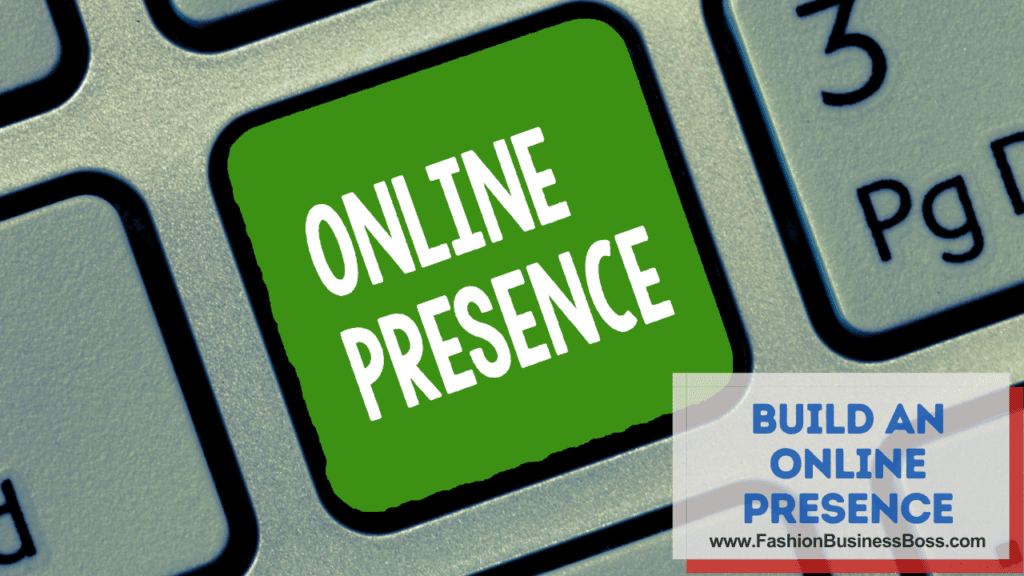Making and selling your own clothes has become an exciting venture. It not only allows you to express your creativity but also opens doors to a potentially effective business.
To create and sell your own clothes, start by defining your style, learning to sew, and sourcing quality materials. Establish a strong online presence, price competitively, and provide excellent customer service.
In this article, we’ll explore the steps to create your own clothing line and how to effectively market and sell your creations.
Define Your Style

Clarifying your personal style is a fundamental step before embarking on the journey of crafting and selling your own clothes. You must determine the kind of clothing you’re most passionate about creating.
Consider whether your preference leans toward comfortable, everyday attire like casual wear, or perhaps you’re drawn to the free-spirited and unconventional styles of bohemian chic. Alternatively, you might have an eye for more luxurious and refined fashion like high-end pieces.
Identifying your niche, or the specific category of clothing you are most inclined towards, is vital. This clarity will enable you to build a recognizable brand identity that resonates with the particular group of people you want to reach. It ensures that your creations align with your audience’s preferences, making it more likely that they will connect with and invest in your clothing line. In essence, defining your style is the foundation upon which your fashion venture will thrive.
Read more about: Crafting Your Style: The Right Clothing Manufacturers for You
Gather Your Supplies
Gathering the necessary supplies is a practical and essential step in beginning your journey of making your own clothes.
First and foremost, you’ll require some basic sewing equipment to bring your creative visions to life. This includes a sewing machine, a crucial tool for stitching your fabrics together efficiently. You’ll also need fabric scissors for cutting materials, pins to hold pieces in place, and needles for hand-sewing or making delicate adjustments.
You must have a selection of fabrics that match your design vision. The choice of fabrics is vital as it directly impacts the look and feel of your clothing creations. Be sure to select fabrics that align with your intended style and comfort level.
Lastly, it’s essential to create a workspace that is well-lit and organized. A well-lit area ensures you can work with precision, while an organized workspace improves efficiency. Having all your materials and tools within easy reach streamlines the creative process and minimizes distractions, allowing you to focus on your craft effectively.
Learn the Basics of Sewing
For those who are just starting, it is highly advisable to explore various educational resources to gain a solid foundation. This can involve enrolling in sewing classes, either in person or through online platforms. Such classes provide structured guidance and hands-on experience, ensuring you comprehend the essential techniques.
Alternatively, you can leverage the wealth of online tutorials available on the internet. These resources offer step-by-step instructions and visual demonstrations, making it more accessible for beginners to learn at their own pace.
Understanding sewing techniques is critical in your journey to creating well-crafted garments. These techniques encompass a wide array of skills, from threading a needle to stitching seams and attaching buttons. Familiarizing yourself with these fundamental practices will empower you to produce clothing items that are not only aesthetically pleasing but also functional and durable. In summary, mastering the basics of sewing lays the groundwork for your clothing-making endeavor.
Create Patterns and Prototypes

Creating patterns and prototypes is a crucial step in the process of making your own clothes, ensuring that your garments fit and function as intended.
Begin by designing and drafting patterns for your clothing creations. Patterns serve as templates that guide you in cutting and sewing the fabric pieces together. It’s advisable to start with simple designs to build your confidence and skills. These uncomplicated patterns help you understand the basic principles of garment construction.
As you gain experience and proficiency, you can gradually progress to more intricate and elaborate designs. This gradual transition allows you to challenge yourself while continually improving your craftsmanship.
Crafting prototypes is equally important. Prototypes are early versions of your garments, created to assess their fit and functionality. By making prototypes, you can identify any potential issues with the design, such as sizing discrepancies or structural weaknesses. This iterative process of refinement ensures that the final product meets your quality standards.
Read more about: Create Your Own Clothing Company: The Fabric of Innovation
Source Quality Materials
Selecting quality materials is a fundamental aspect of creating your own clothing line, and it plays a significant role in establishing your brand’s reputation for excellence.
When it comes to choosing fabrics and materials, prioritize those that are of high quality. Quality materials not only enhance the overall look and feel of your garments but also contribute to their durability and comfort. These attributes are essential for building trust and loyalty among your customers.
To acquire these materials, begin by researching reputable suppliers. Consider both local and online options, and pay attention to their track record for providing consistent quality. Reading customer reviews and seeking recommendations from fellow creators can be valuable in this regard.
Furthermore, it’s prudent to engage in negotiation with suppliers to secure competitive prices for your materials. Negotiating skillfully can help you manage your production costs, allowing you to offer your creations at competitive prices while maintaining quality.
Develop Your Brand Identity
Developing a distinctive brand identity is a crucial aspect of establishing your clothing business and ensuring it stands out in the market.
To begin, it’s essential to craft a compelling brand story. This narrative should convey the essence of your brand, encompassing your journey, values, and the inspiration behind your creations. By sharing your story, you create a connection with your audience, allowing them to relate to your brand on a personal level.
A memorable logo is a key component of your brand identity. Your logo should visually represent your style and values. It serves as a symbol that customers can recognize and associate with your brand. Simplicity is often effective when designing a logo, as it enhances its recognizability.
It’s imperative that your brand identity resonates with your target market. Understand the preferences, needs, and desires of your intended audience, and ensure your brand story and logo align with these aspects. This alignment creates a stronger bond between your brand and your customers.
Setting your brand apart from competitors is another vital aspect. Your brand identity should convey what makes your clothing line unique, whether it’s your design aesthetics, ethical practices, or product quality.
Build an Online Presence

Building a powerful online presence is a crucial step in promoting your clothing business and connecting with your potential customers.
To start, consider creating a dedicated website for your brand. A website serves as a central hub where customers can learn more about your products, view your creations, and make purchases. It provides credibility and a professional online presence for your brand.
Establishing a strong presence on social media platforms like Instagram, Pinterest, and Facebook is essential. These platforms offer a broader reach and a direct channel to interact with your audience.
Consistency is key. Regularly share engaging content on your social media accounts. This content can include high-quality photos of your clothing creations, behind-the-scenes glimpses of your design process, and style inspiration that resonates with your target market.
Read more about: Creating Your Online Clothing Store: Steps to Stability
Pricing Strategy
Developing a sound pricing strategy for your clothing creations is a crucial aspect of running your business effectively.
To establish your pricing, it’s essential to take several factors into account. First and foremost, consider your production costs. This includes the expenses related to materials, labor, equipment, and any overhead costs. Accurately calculating these costs provides a baseline for determining your prices.
Next, examine your competitors’ pricing. This involves researching how similar clothing items are priced in the market. Understanding the pricing landscape can help you position your products competitively.
Perceived value is another key element. It’s important to gauge how your target audience perceives the value of your clothing. Factors such as the uniqueness of your designs, the quality of materials used, and your brand’s reputation all contribute to the perceived value.
Transparency is vital in pricing. Clearly communicate the factors that influence your prices to your customers. This fosters trust and helps customers understand the worth of your products.
Sales Channels
Utilizing various sales channels is a strategic approach to reach a wider audience and distribute your clothing creations effectively.
Firstly, your own website serves as a primary sales channel. It provides an online platform where customers can directly purchase your products. Your website should be user-friendly, showcasing your creations and offering a seamless shopping experience.
Online marketplaces like Etsy and eBay are also valuable channels. These platforms have established customer bases and can expose your products to a broader online audience. Listing your items on these marketplaces can expand your reach beyond your website.
Consider local boutiques as a brick-and-mortar sales channel. Partnering with boutiques allows you to display your clothing in physical locations, making it accessible to customers who prefer in-person shopping.
Pop-up markets or craft fairs are temporary sales channels where you can set up a booth to showcase and sell your creations. These events provide opportunities for direct interaction with potential customers and can help you build brand awareness.
Marketing and Promotion

Marketing and promotion are essential aspects of promoting your clothing business and connecting with your audience effectively.
Firstly, consider investing in search engine optimization (SEO). SEO involves optimizing your website and online content to rank higher in search engine results. This helps potential customers find your brand when searching for clothing related to your niche. It’s a valuable strategy for increasing online visibility.
Email marketing is another potent tool. By collecting customer email addresses and sending targeted messages, you can nurture relationships with your audience. You can share updates about new arrivals, promotions, and special offers directly to their inboxes.
Collaborating with influencers can also be beneficial. Influencers have dedicated followers who trust their recommendations. Partnering with influencers who align with your brand can help you reach a broader and more engaged audience.
Running promotions and sales can attract both new and existing customers. Special offers and discounts can incentivize purchases and generate buzz around your brand.
Read more about: Creating Your Vision: How to Get Your Own Clothing Brand?
Customer Service
Providing exceptional customer service is a cornerstone of a thriving clothing business, as it fosters customer satisfaction and loyalty.
Promptly addressing customer inquiries is essential. When customers reach out with questions or requests, responding in a timely manner shows that you value their interest and are attentive to their needs. This responsiveness creates a positive impression of your brand.
Addressing customer concerns is equally important. When issues arise, approach them with empathy and a willingness to find solutions. Resolving problems promptly and effectively demonstrates your commitment to customer satisfaction.
Ensuring smooth transactions is key to a positive customer experience. From the moment a customer places an order to the delivery of their purchase, the process should be seamless and transparent. Clear communication and reliable order fulfillment contribute to a hassle-free transaction.
Shipping and Returns
Managing shipping and returns effectively is vital in ensuring a positive post-purchase experience for your customers and maintaining a good reputation for your clothing business.
To begin, it’s essential to offer reliable and efficient shipping options. This means selecting trustworthy carriers and providing accurate delivery estimates. Customers appreciate knowing when to expect their orders, and reliable shipping builds trust.
Clearly communicate your shipping policies to customers. Transparency regarding shipping costs, delivery times, and tracking information helps set clear expectations. This clarity can prevent misunderstandings and create a smoother shopping experience.
The return process should be hassle-free. Customers may occasionally need to return items for various reasons, and a straightforward return policy can make this process easier for them. Clearly outline your return policy, including instructions and any associated costs. Promptly process returns to show your commitment to customer satisfaction.
Positive post-purchase experiences, including reliable shipping and hassle-free returns, contribute to a satisfied customer base. Happy customers are more likely to become loyal customers and advocates for your brand. Word-of-mouth recommendations and positive online reviews can enhance your brand’s reputation and credibility.
Conclusion
Crafting and selling your own clothes can be a fulfilling journey. By following these steps and staying committed to honing your craft, you can turn your passion into a thriving business.
Frequently Asked Questions

Q: How can one begin making their own clothes for sale?
A: To start making your own clothes for sale, individuals should begin by defining their unique style and acquiring essential sewing skills. They should gather quality materials and create patterns for their designs, starting with simple pieces and gradually expanding their collection.
Q What is the significance of branding and marketing in selling handmade clothes?
A: Establishing a strong brand identity and marketing handmade clothes are crucial steps in standing out in a competitive market. Individuals should create an online presence, set a pricing strategy, and utilize various marketing channels to reach their target audience effectively.
Q: How can the selling of handmade clothes be ensured?
A: To ensure selling handmade clothes, individuals should prioritize excellent customer service, provide reliable shipping options, and maintain a flexible return policy. Regularly analyzing sales data and customer feedback is important to adapt to changing trends and preferences.
To learn more about starting your own clothing business, check out my startup documents here.
Please note that the contents of this blog are for informational and entertainment purposes only and should not be construed as legal advice. Any action taken based on the information provided in this blog is solely at your own risk. Additionally, all images used in this blog are generated under the CC0 license of Creative Commons, which means they are free to use for any purpose without attribution.

Meet Shawn Chun: Entrepreneur and Fashion Business Fan.
I’m a happy individual who happens to be an entrepreneur. I have owned several types of businesses in my life from a coffee shop to an import and export business to an online review business plus a few more and now I create online resources for those interested in starting new ventures. It’s demanding work but I love it. I do it for those passionate about their business and their goals. That’s why when I meet a designer or boutique owner at a craft fair, farmers market, retail location or anywhere else I see myself. I know how hard the struggle is to retain clients, find good employees and keep the business growing all while trying to stay competitive.
That’s why I created Fashion Business Boss: I want to help fashion business owners like you build a thriving business that brings you endless joy and supports your ideal lifestyle.

